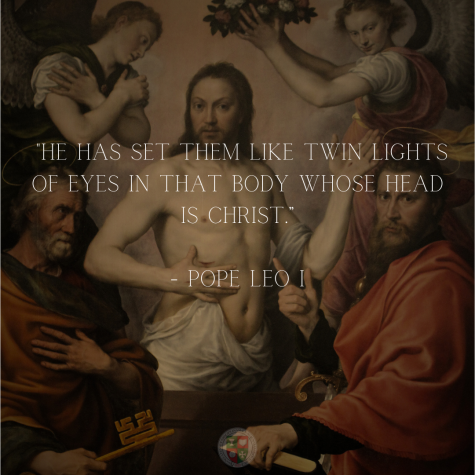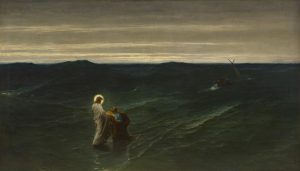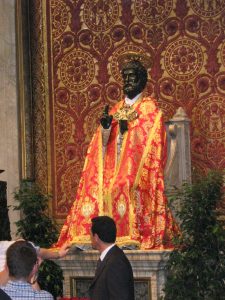Brothers in Christ: Unveiling the Divine Connection Between St. Peter and St. Paul on their Solemnity
June 28, 2023

“Both apostles share the same feast day, for these two were one; and even though they suffered on different days, they were as one. Peter went first, and Paul followed. And so we celebrate this day made holy for us by the apostles’ blood. Let us embrace what they believed, their life, their labors, their sufferings, their preaching, and their confession of faith.” – Saint Augustine of Hippo
In accordance with ancient Roman mythology, Romulus and Remus, who were raised by a she-wolf, decided to establish a city but disagreed on its location. As a result, Romulus killed Remus and founded a city, which he named Rome, after himself. This ancient myth played a significant role in shaping the religious beliefs of the people of Rome during that era. The myths that explained the founding of a city held great importance, often serving as central elements in cultural and historical celebrations of ancient times. This was particularly true in Rome. Consequently, when the early Church began to take root in Rome, instead of disregarding this cultural practice, the early Church adapted the story of Romulus and Remus into a Christian festival commemorating the new founders of Rome, namely Peter and Paul, on June 29.
While it is widely believed that both Peter and Paul were martyred under Nero’s reign, with Peter being crucified upside down and Paul being beheaded between 64 and 67 A.D., the likelihood of both killings occurring on the same day of the same year is highly improbable. It is more plausible that the decision to commemorate the deaths of both Saint Peter and Paul on June 29 was driven by the desire to transform a pagan celebration into a Christian observance, as has been done with numerous religious holidays throughout history. Notably, June 29 coincided with the feast of Romulus and Remus, the founders of Rome. Christians likely sought to honor the two founders of the Church on that very day, symbolizing the birth of a new Christian Rome.
Simon, who was born in Bethsaida near the Sea of Galilee, worked as a fisherman alongside his brother Andrew. According to the Gospel of Matthew, Simon and Andrew were the first individuals invited by Jesus to follow Him. After Jesus’ baptism by John the Baptist and His forty days of prayer and fasting in the desert, He went to the Sea of Galilee, where He saw Simon and Andrew fishing. Jesus called out to them, saying, “Come after me, and I will make you fishers of men” (Matthew 4:19). In response, these two brothers abandoned everything and became Jesus’ initial disciples. The Gospel of John presents a slightly different sequence, stating that Andrew initially followed Jesus and subsequently introduced Simon to Him the next day. When Jesus encountered Simon, He declared, “‘You are Simon the son of John; you will be called Cephas'” (John 1:42). In Matthew’s Gospel, Jesus changed Simon’s name to Cephas (Peter), saying to him, “I say to you, you are Peter, and upon this rock I will build my church, and the gates of the netherworld shall not prevail against it. I will give you the keys to the kingdom of heaven. Whatever you bind on earth shall be bound in heaven; and whatever you loose on earth shall be loosed in heaven” (Matthew 16:18–19).

Jesus and Peter on the Water by Gustave Brion (1863)
With his new name and the unique spiritual authority vested in him as the holder of the “keys to the kingdom of heaven,” Peter emerged as the central leader of the Church following Pentecost. He spent approximately ten years in Jerusalem, delivering powerful sermons, performing miracles, and converting many people. Eventually, he journeyed to Rome and established the Church there, becoming its first bishop. Around the year 64, during Emperor Nero’s persecutions, Peter was martyred. Tradition holds that Peter requested to be crucified upside down, as he did not consider himself worthy of dying in the same manner as Jesus. His tomb is located beneath the main altar of Saint Peter’s Basilica.
Saul, born as a Roman citizen in Tarsus (modern-day Turkey), traveled to Jerusalem as a young man to study under the esteemed rabbi Gamaliel. After Jesus’ ascension into Heaven, Saul became one of the most fervent persecutors of the early Church, playing a role in the death of the proto-martyr Saint Stephen (Acts 7:58). However, a few years later, as Saul was on his way to Damascus to persecute more Christians, he was struck to the ground and left blind. He heard Jesus’ voice asking, “Saul, Saul, why are you persecuting me?” (Acts 9:4). Jesus instructed him to seek out Ananias, a disciple in Damascus, who baptized Saul. Saul spent approximately three years in Arabia, engaging in intense prayer and study, before returning to Damascus and then proceeding to Jerusalem.
In Jerusalem, Saul began using his Roman name, Paul, and spent around the next ten years as a missionary throughout the Mediterranean region. Subsequently, he was imprisoned in Jerusalem for a couple of years before being sent to Rome for trial due to his Roman citizenship. In Rome, he encountered Saint Peter. According to tradition, Paul was beheaded just outside the city, and when his head hit the ground, water springs emerged with each bounce. This location is now marked by the Abbey of the Three Fountains.
The time that Peter and Paul spent together was limited. Paul was not present with Peter and the Eleven during Jesus’ three-year public ministry or during the early years of the Christian community. However, in 37 AD, shortly after his conversion, Paul spent fifteen significant days with Peter in Jerusalem (Gal 1:18; also mentioned in Acts 9:26-28). Most of their time was spent privately, with just the two of them. Peter shared his firsthand knowledge of Jesus, and Paul attentively listened. They exchanged stories about their ministry, discussed the privilege and challenges of preaching the gospel, and strategized on how to carry forward their work. They would reunite fourteen years later during the Council of Jerusalem in 51 AD (Acts 5:1-21). Each of them profoundly influenced the other.
Evidence of a long-standing tradition of celebrating the solemnities of both Saint Peter and Saint Paul on the same day can be traced as far back as the year 258. Together, these two saints are the founders of the See of Rome, having preached, ministered, and suffered martyrdom in that city. Rome continues to commemorate them with a grand feast, featuring a spectacular fireworks display and adorning Saint Peter with a magnificent flower carpet (infiorata). On this occasion, the Pope presents a band of white wool (the palio) to the bishops of the city before kissing the foot of the statue of Saint Peter, which is draped in a red cloak for the anniversary.

Saint Peter statue by Arnolfo di Cambio dressed in Papal Robes
Though distinct and having lived in different times and circumstances, even experiencing conflicts due to their differences, Saint Peter and Paul are akin to complementary brothers, united by the Gospel they preached and upheld. They played a vital role in transmitting and preserving the message of Jesus.
Saints Peter and Paul are regarded as the foundational pillars of the Church. Peter represents the Church’s stability and the office of the Vicar of Christ, while Paul embodies the mission of evangelization entrusted to the Church by Jesus Himself. Paul also serves as the Church’s first theologian, as evidenced by his numerous letters expounding on the Gospels. Their twin martyrdom serves as a reminder that the Church must possess both stability and a mission-oriented outlook. It must remain grounded in the ancient Truth while continuously developing a deeper understanding of the mysteries of faith.
As we pay tribute to these two pillars of the Church, let us recall that, despite their status as great saints, they were ordinary men called to extraordinary vocations. They responded to the call, and God used them in ways they could never have imagined. Let us reflect on our own calling in light of theirs and resolve to dedicate our lives to the Church, aligning ourselves with these two men so that God may continue their holy mission through us.
Categories
Discerning, a Vocations BlogGeneral News
Stirrings
Uncategorized
Julio César Martínez Chávez and José de Jesús Rodríguez Pérez Profess Final Vows – Tlalpan, MX.
Last weekend, Julio César Martínez Chávez and José de Jesús Rodríguez Pérez professed their final vows in the Chapel of Our Lady of Guadalupe in Tlalpan, Mexico City. We […]
Read MoreThe 4th Basilian Latin American Summit: A Call to Unite and Care for Our Common Home
Excursion through the Department of Boyacá, north of Bogotá. The site of the Latin American Summit was the town of Villa de Leyva, in Boyacá. This year, the 4th […]
Read MoreCatholic Centre for Immigrants: Upholding the Dignity of Refugees in Ottawa
Amidst the current conflicts that force many to depart their homelands, The Catholic Centre for Immigrants (CCI) Ottawa partners with The Congregation of St. Basil to successfully assist hundreds of […]
Read MoreVIDEO – Scholastic Bishoy Dawood, CSB: Gradual Joy – Houston, TX.
You’re not going to get it all, not right away at least! Our Scholastic Bishoy Dawood CSB, shares his insights into the what makes people dissatisfied and unfulfilled, as well […]
Read MoreVIDEO – Fr. David Sharp, CSB: The True Meaning of Success – Wickenburg, AZ.
Life is a lot easier when we do it together – Fr. David Sharp, a Basilian of over 60 years, shares his insight into the true foundation of a fulfilling […]
Read More